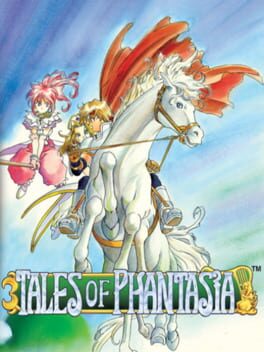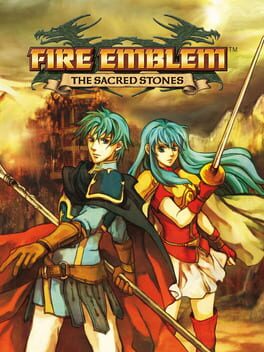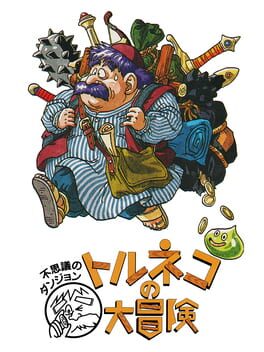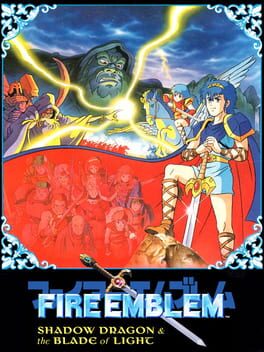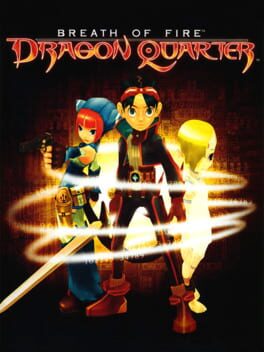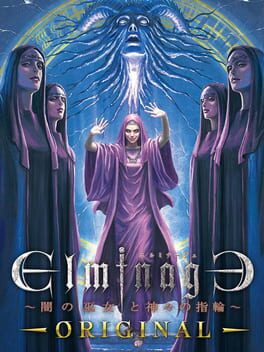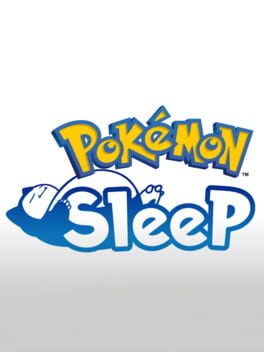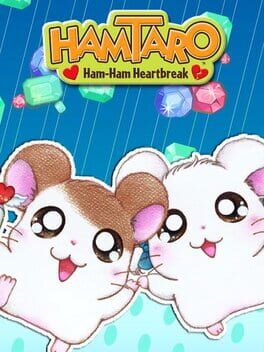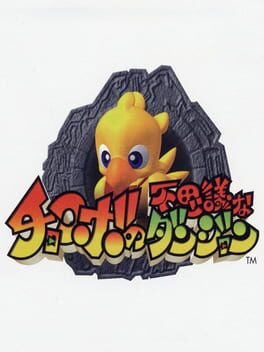Elephant_Parade
1995
Absolutely gorgeous. Towns, dungeons, cutscenes, the world map, menus—everything looks incredibly good, particularly battles, which have some of the best spritework I've ever seen. In some ways, it feels more like an early PSX game than a late SNES one (the voice acting helps).
Unfortunately, it plays terribly. The combat isn't a brawler and sometimes barely even feels like an ARPG; it's more like a bizarre spin on ATB. That would be fine if it worked, but it doesn't; battles tend to play out the same way every time and you usually spend half the combat watching spell animations play out. It's also quite easy outside of a handful of sudden, brief, and absolutely brutal difficulty spikes: an early boss who spams an incredibly powerful AoE spell, a later boss who attacks incredibly quickly, a few segments where you're down a party member and have to contend with loads of enemies who inflict petrification, and (if you skip the side content like I did) the final dungeon. There are also a handful of bizarre dick moves, like enemies who absorb elements (which your allies will haplessly continue to use; you can disable the offending skills, but only outside battle) and status ailments remaining even after death.
Dungeon design is meh and the random encounter rate is obscenely high—not a great combination, especially with how dreadful the battle system is!
The story starts strong, but checks into Fillerville near the start of the second act and takes a long time to recover. By Moria Gallery, I was snoozing, and it didn't end there. The final arc is okay but doesn't quite live up to the first.
Unfortunately, it plays terribly. The combat isn't a brawler and sometimes barely even feels like an ARPG; it's more like a bizarre spin on ATB. That would be fine if it worked, but it doesn't; battles tend to play out the same way every time and you usually spend half the combat watching spell animations play out. It's also quite easy outside of a handful of sudden, brief, and absolutely brutal difficulty spikes: an early boss who spams an incredibly powerful AoE spell, a later boss who attacks incredibly quickly, a few segments where you're down a party member and have to contend with loads of enemies who inflict petrification, and (if you skip the side content like I did) the final dungeon. There are also a handful of bizarre dick moves, like enemies who absorb elements (which your allies will haplessly continue to use; you can disable the offending skills, but only outside battle) and status ailments remaining even after death.
Dungeon design is meh and the random encounter rate is obscenely high—not a great combination, especially with how dreadful the battle system is!
The story starts strong, but checks into Fillerville near the start of the second act and takes a long time to recover. By Moria Gallery, I was snoozing, and it didn't end there. The final arc is okay but doesn't quite live up to the first.
The total lack of informational QoL (no battle previews! no ingame weapon stat display!) forces you to play fast and loose with your units, putting them into situations where they'll receive unknown and possibly lethal amounts of damage. In a modern FE game that would be horrible, but FE1 doesn't have support conversations and the like; with a handful of exceptions, the death of a unit means the loss of a gameplay asset and nothing else.
Inventory management is beyond awful. Units have four inventory slots, trading is one-way, and the convoy is tied to a static tile on the map, not Marth.
Pretty good game!
Inventory management is beyond awful. Units have four inventory slots, trading is one-way, and the convoy is tied to a static tile on the map, not Marth.
Pretty good game!
1993
A Wizardry clone that modernizes the traditional systems and gives them a beautiful coat of paint, but utterly fails at dungeon and item design. Also hampered by lackluster dungeon graphics past the first dungeon and a weird difficulty curve.
Nearly every non-spellcaster class possesses a variety of in-battle skills, giving attackers more to do than hack away every turn forever. Each class has a niche: Warriors are tanks with extremely strong single-target physical attacks but no other options; Samurai have excellent damage output but poor defense for a frontliner; Monks have a grab bag of special attacks but no strong single-target attacks; and so on. Besides ensuring niche protection, this encourages you to multi-class. Unlike in Wizardry, multi-classing is a fully functional system that works about how you'd expect it to, though halflings' and half-onis' wacky statlines make it hard for them to meet the prerequisites of some classes.
Other key modernizations: fixed encounters are visible as pools of fog; item information is fully exposed; level drain and aging (but not, surprisingly, permadeath!) are out; ironman mode is a toggle rather than an obligation. Unfortunately, the game's big gimmick, max-HP-reducing attacks, doesn't really work: the only way to restore your max HP is to return to town, and there's rarely a compelling reason not to return to town, so when you get hit with one (which is pretty rare), you just return to town.
The art is excellent. Enemies look cool; the character portraits, while few, are good; the UI is fairly stylish (if you can excuse the inexplicable bloom). Dungeon graphics are a bit weaker: the first major dungeon is a gorgeous blend of 2D and 3D, but everything after looks like PS2 textures as seen through a crappy black-and-white filter. The music is outstanding, but the battle theme's lead-in is longer than the average encounter; it wore on me before the game was out.
The big problem: the dungeons are really boring. Like, less interesting than the ones in Wizardry 1, the decades-old game that founded the genre. The penultimate dungeon was decent aside from some truly heinous mandatory secret doors, but it takes maybe eight hours to get there, and then the final dungeon sucks again (mostly because it's incredibly short, leaving you to grind to fight the final boss).
Equipment drops are unvaried and largely boring until the final dungeon, which hands out special items like candy. A DRPG with boring items is almost as bad as a DRPG with boring dungeons, and this game is both.
Also, there were a few large difficulty spikes. The first, a quartet of heavy-hitting minibosses partway through the second dungeon, made me drop the game until I came back and spent an hour grinding. The second, a pair of even heavier-hitting minibosses at the start of the final dungeon, was maybe half that. The last, the final boss whose AoE attacks can take out endgame-level thieves and wizards in a single round, took a few hours. The common thread here is that there isn't really any way around it: if you don't have enough HP, you gotta grind (and probably reclass your characters so they can level faster and get more HP). I'm not particularly enthused about spending four or five hours in a 15-hour game grinding, especially when said game costs $40.
The localization has some small technical issues, but it reads well.
Overall verdict: absolutely not worth your time or money, but a sequel with better dungeon design might be.
Nearly every non-spellcaster class possesses a variety of in-battle skills, giving attackers more to do than hack away every turn forever. Each class has a niche: Warriors are tanks with extremely strong single-target physical attacks but no other options; Samurai have excellent damage output but poor defense for a frontliner; Monks have a grab bag of special attacks but no strong single-target attacks; and so on. Besides ensuring niche protection, this encourages you to multi-class. Unlike in Wizardry, multi-classing is a fully functional system that works about how you'd expect it to, though halflings' and half-onis' wacky statlines make it hard for them to meet the prerequisites of some classes.
Other key modernizations: fixed encounters are visible as pools of fog; item information is fully exposed; level drain and aging (but not, surprisingly, permadeath!) are out; ironman mode is a toggle rather than an obligation. Unfortunately, the game's big gimmick, max-HP-reducing attacks, doesn't really work: the only way to restore your max HP is to return to town, and there's rarely a compelling reason not to return to town, so when you get hit with one (which is pretty rare), you just return to town.
The art is excellent. Enemies look cool; the character portraits, while few, are good; the UI is fairly stylish (if you can excuse the inexplicable bloom). Dungeon graphics are a bit weaker: the first major dungeon is a gorgeous blend of 2D and 3D, but everything after looks like PS2 textures as seen through a crappy black-and-white filter. The music is outstanding, but the battle theme's lead-in is longer than the average encounter; it wore on me before the game was out.
The big problem: the dungeons are really boring. Like, less interesting than the ones in Wizardry 1, the decades-old game that founded the genre. The penultimate dungeon was decent aside from some truly heinous mandatory secret doors, but it takes maybe eight hours to get there, and then the final dungeon sucks again (mostly because it's incredibly short, leaving you to grind to fight the final boss).
Equipment drops are unvaried and largely boring until the final dungeon, which hands out special items like candy. A DRPG with boring items is almost as bad as a DRPG with boring dungeons, and this game is both.
Also, there were a few large difficulty spikes. The first, a quartet of heavy-hitting minibosses partway through the second dungeon, made me drop the game until I came back and spent an hour grinding. The second, a pair of even heavier-hitting minibosses at the start of the final dungeon, was maybe half that. The last, the final boss whose AoE attacks can take out endgame-level thieves and wizards in a single round, took a few hours. The common thread here is that there isn't really any way around it: if you don't have enough HP, you gotta grind (and probably reclass your characters so they can level faster and get more HP). I'm not particularly enthused about spending four or five hours in a 15-hour game grinding, especially when said game costs $40.
The localization has some small technical issues, but it reads well.
Overall verdict: absolutely not worth your time or money, but a sequel with better dungeon design might be.
Too budget for its own good. Every town uses the same tileset; same goes for each type of dungeon. The combat is repetitive and abundant: it's Dragon Quest without the quirky spells. The plot stops existing after the first hour and doesn't come back until the last few. Oh, and the random encounter rate is too high.
The intro is really neat, though. You play as the last party to have reached the final dungeon, and if you open the menu, you'll find they have exactly the kind of inventory you would: a mixture of high-level consumables (including 89 (!) Elixirs) and random garbage. That got a good laugh out of me.
The intro is really neat, though. You play as the last party to have reached the final dungeon, and if you open the menu, you'll find they have exactly the kind of inventory you would: a mixture of high-level consumables (including 89 (!) Elixirs) and random garbage. That got a good laugh out of me.
Cool setting, great cutscene direction, and innovative mechanics, but I found the actual experience of playing the game agonizing. I think it was the combination of the very long battles, the strict resource management, and the looming threat of having to replay the entire game; I only made it as far as the ice caves.
2012
2023
Bizarre kusoge grindathon. Unlike most Mystery Dungeon games, you keep everything when you leave the dungeon—levels, stat boosts, equipment—and bring everything back in, too. Where Torneko 1 and Shiren 1 were about strategy and risk management, Chocobo 1 is about fusing equipment together over and over again until you have high enough stats to proceed.
Also, while movement is still turn-based, attacking uses a real-time ATB system. If your attack charges faster than an enemy's—and it usually does, especially once you start snorting stat-boost seeds—you can walk up to an enemy, attack them, run away until you've left their aggro range, and repeat until you've defeated them. This works on every nonboss enemy in the game.
Also, while movement is still turn-based, attacking uses a real-time ATB system. If your attack charges faster than an enemy's—and it usually does, especially once you start snorting stat-boost seeds—you can walk up to an enemy, attack them, run away until you've left their aggro range, and repeat until you've defeated them. This works on every nonboss enemy in the game.
